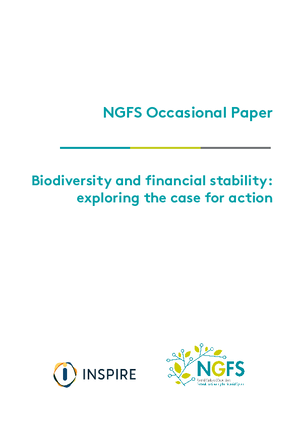Biodiversity and financial stability: exploring the case for action
Biodiversity and financial stability: exploring the case for action
18 June: NGFS and INSPIRE have established a joint Study Group on Biodiversity and Financial Stability, with the aim to understand the potential implications of biodiversity loss for financial stability.
Biodiversity is declining faster than at any time in human history. Policy efforts have been unable to slow the global loss of biodiversity, while the pressures driving this decline continue to intensify. In addition to increasing awareness of the impacts of economic activities on biodiversity, some central banks and financial supervisors are starting to recognise the potential of biodiversity loss as a threat to their core mandates for financial and monetary stability. Biodiversity loss could pose risks to the financial system through complex feedback loops, externalities and tipping points, including transition risks (e.g. incompatibility between financial institutions’ exposures and government measures) and physical risks (e.g. declining performance of assets or economic activities that depend upon biodiversity).
The global economy and financial system are embedded in the biosphere. Companies both depend on ecosystem services such as clean air and freshwater, and impact on the natural systems that provide those services. A range of market and institutional drivers explains the continued failure to value biodiversity but efforts to quantify the economic dependence on nature – as one aspect of addressing this failure – are growing. The financial system can both contribute to the depletion of biodiversity and promote its conservation and sustainable use.
The study group will explore whether and how central banks and supervisors can, within the remit of their mandates, play a role in addressing the challenge of biodiversity loss itself and the knowledge gaps around it, from assessment and monitoring of the relationship between biodiversity loss and financial stability to considering if central bank portfolios should include conservation goals. Applying a ‘double materiality’ approach to
biodiversity loss could be particularly insightful. Nature related hazards can affect companies and financial institutions, but companies and financial institutions can also affect biodiversity and the climate. This suggests
that a comprehensive approach to risk management should account for how financial institutions are exposed to biodiversity-related financial risks, but also how they contribute to such risks.
Authors
Publisher
Published June 18, 2021

